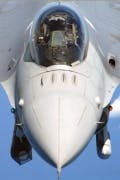Lockheed Martin moves ahead on DARPA quick-turnaround project to develop long-range anti ship cruise missile
ARLINGTON, Va., 11 Nov. 2010. Missile designers at Lockheed Martin Corp. are moving ahead with a plan to develop the advanced Long Range Anti-Ship Missile (LRASM) for the U.S. Defense Advanced Research Projects Agency (DARPA) in Arlington, Va. The new anti-ship missile and its associated missile electronics will provide Navy warships like the guided missile cruiser with the ability to attack important enemy ships outside the ranges of the enemy's ability to respond with anti-ship missiles of their own.
DARPA awarded Lockheed Martin (NYSE: LMT) a $157.7 million contract Wednesday for the LRASM demonstration program, a joint DARPA/U.S. Office of Naval Research (ONR) effort rapidly to develop and demonstrate a ship-launched, stand-off anti-ship strike weapon able to destroy enemy warships and other maritime surface targets at significant stand-off ranges.
Two divisions of Lockheed Martin won separate $10 million study contracts from DARPA in summer 2009 to start designing LRASM and its missile guidance systems. Winning the contracts were the Lockheed Martin Missiles and Fire Control segment in Grand Prairie, Texas, as well as at Lockheed Martin Missiles and Fire Control in Orlando, Fla.
For the contract awarded Wednesday, Lockheed Martin will further design the LRASM in Grand Prairie, Texas; West Palm Beach, Fla.; Broomfield, Colo.; Litchfield Park, Ariz.; Baltimore; East Aurora, N.Y.; Elkton, Md.; Portland, Ore.; and Melbourne, Fla.
The new anti-ship missile and its associated missile electronics will provide Navy warships such as the guided missile cruiser with the ability to attack important enemy ships outside the range of the enemy's ability to respond with anti-ship missiles of its own.
The LRASM concept seeks to reduce dependence on precision intelligence, surveillance, and reconnaissance sources, data links, and GPS satellite navigation and guidance by demonstrating advanced onboard missile sensor and missile processing capabilities, which will enable precision engagement of moving ships based only on course and initial target cueing in extremely hostile environments.
LRASM will be compatible with the Navy Vertical Launch System and will have sufficient range to engage targets from well beyond direct counter-fire ranges of projected threats. The missile also will be able to penetrate advanced air defenses. If the LRASM program yields a new deployable anti-ship missile, it would replace front-line U.S. anti-ship weapon systems such as the Boeing AGM-84 Harpoon missile.
Lockheed Martin has completed the LRASM program's initial phase to conduct trade studies and system performance analysis, develop a preliminary design, and perform risk reduction testing of critical elements of the LRASM system. Lockheed Martin also has completed a preliminary design review, operational effectiveness assessment, and evaluation of the technology development plan to complete the remaining DARPA demonstration program and operational switch to the Navy.
For more information contact Lockheed Martin Missiles and Fire Control online at www.lockheedmartin.com/mfc, DARPA at www.darpa.mil, or the Office of Naval Research at www.onr.navy.mil.

